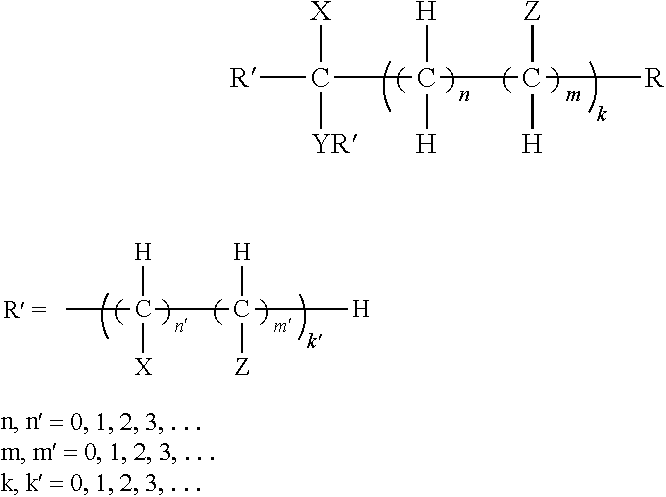Use of polyols as scale control reagents in the mining processes
a technology of scale control and polyols, which is applied in the direction of process efficiency improvement, chemistry apparatus and processes, and aluminum compounds, can solve the problems of auto-precipitation of aluminate across thickeners, washers, and filtration steps, and the system using these solutions is often prone to fouling, so as to achieve the effect of increasing the stability of the process salt solution
- Summary
- Abstract
- Description
- Claims
- Application Information
AI Technical Summary
Benefits of technology
Problems solved by technology
Method used
Image
Examples
examples
[0039]The foregoing may be better understood by reference to the following examples, which are intended to illustrate methods for carrying out the invention and are not intended to limit the scope of the invention.
[0040]It should be understood that various changes and modifications to the presently preferred embodiments described herein will be apparent to those skilled in the art. Such changes and modifications can be made without departing from the spirit and scope of the invention and without diminishing its intended advantages. It is therefore intended that such changes and modifications be covered by the appended claims.
example 1
[0042]Tests were conducted to examine the effect of polysaccharide derivatives (A, B, C, D), PVA derivative (E) and polyglycerol (F) on the control of liquor stability (alumina loss and scaling rate). The tests utilized Bayer pregnant liquor prepared via dissolving a certain amount of aluminum trihydrates into spent liquor to obtain the desired starting A / C (aluminum to caustic ratio). Liquor stabilization reagents were pre-dosed into 250 ml Nalgene bottles. Then 200 ml prepared liquor was decanted into each of the bottles, which were subsequently rotated at 80° C. in a water bath for approximately 29 hours. At specific time intervals over this test period, 10 ml of liquor was sampled from each bottle and analyzed for A / C. The results (Table 1) showing A / C breakpoints were obtained. As shown in table 1, it is apparent that the A / C of the blank (without polymer addition) dropped dramatically within the 20 hr period. The liquors dosed with PVA derivative (E) behaved slightly better th...
example 2
[0044]Tests were conducted to examine the effect of polysaccharide derivatives (A and C), different polyglycerols (F, G and H) and polydextrose J on the control of liquor stability (alumina loss and scaling rate). The tests utilized Bayer pregnant liquor prepared via dissolving a certain amount of aluminum trihydrate into spent liquor to obtain the desired starting A / C (aluminum to caustic ratio). Liquor stabilization reagents were pre-dosed into 250 ml Nalgene bottles. Then 200 ml prepared liquor was decanted into each of the bottles, which were subsequently rotated at 55° C. in a water bath for approximately 27 hours. At specific time intervals over this test period, 10 mls of liquor was sampled from each bottle and analyzed for A / C. As shown in Table 2, the A / C of the blank (without polymer addition) dropped significantly within a 27 hr period. The liquor dosed with 10.43 ppm A behaved similarly to the blank. The A / C of J dosed liquor dropped slightly after 22 hrs. However, the a...
PUM
| Property | Measurement | Unit |
|---|---|---|
| weight percent | aaaaa | aaaaa |
| stability | aaaaa | aaaaa |
| concentration | aaaaa | aaaaa |
Abstract
Description
Claims
Application Information
 Login to View More
Login to View More - R&D
- Intellectual Property
- Life Sciences
- Materials
- Tech Scout
- Unparalleled Data Quality
- Higher Quality Content
- 60% Fewer Hallucinations
Browse by: Latest US Patents, China's latest patents, Technical Efficacy Thesaurus, Application Domain, Technology Topic, Popular Technical Reports.
© 2025 PatSnap. All rights reserved.Legal|Privacy policy|Modern Slavery Act Transparency Statement|Sitemap|About US| Contact US: help@patsnap.com

